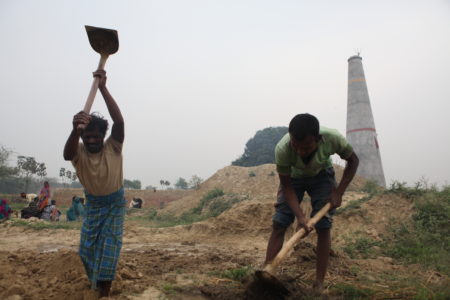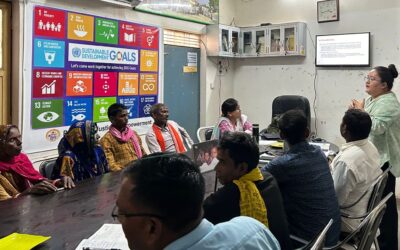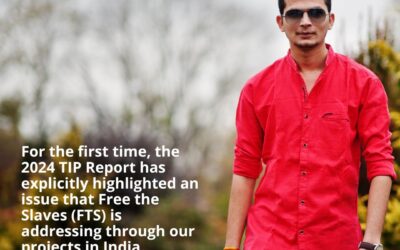Like millions enslaved at India’s notorious brick kilns, Raju Vanvasi endured dehumanizing mistreatment. All because he had borrowed 7,000 rupees, about $100.
The money lender said paying off the debt would be simple, just make bricks at a friend’s factory. It would be even easier if his wife would work too. But it didn’t turn out that way. It was a scam, a debt-slavery trap.

Enslavement in India’s notorious “brick belt” brings endless work under inhuman conditions without pay | Photo: FTS/Timpy
Raju and his wife were paid just enough to buy food to stay alive. One day, he asked again for his pay so his daughter could see a doctor. That brought a severe beating.
Fortunately, a field activist from the Free the Slaves partner organization MSEMVS discovered that Raju needed urgent medical care. And that’s how he and his wife were able to break free.
But the case worker took care of more than the medical emergency. She offered Raju help if he wanted to take his case to the Labor Department for formal government intervention. This is a standard element of our Community Liberation Model. We help the enslaved break free, and then help them rebuild their lives.
It took courage for Raju to take on powerful business interests who control the brick industry near the city of Varanasi. However, just the threat of a government investigation scared off the brick kiln owner and the money lender. When they heard that inspectors might open a case, Raju suddenly received 8,000 rupees in back pay, and his wife got 2,000 rupees more. Raju and his family are safe, and free.
But the story doesn’t end there. Another 13 couples are still enslaved at the kiln. Raju says if the owner doesn’t pay them too, those government inspectors will be making a visit.
Learn more about our work in India on our India program webpage. Or watch our inspiring video, What Freedom Looks Like, to see how others in India have broken free with the help of Free the Slaves.
Raju’s freedom was made possible by generous contributions from Free the Slaves supporters just like you. Please make or renew your annual donation during our 2018 “It Starts With Freedom” year-end campaign. Thanks.




